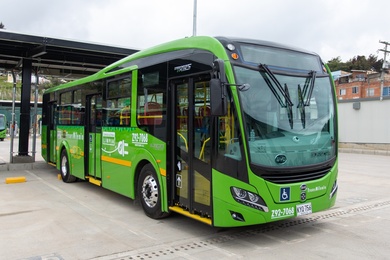Digital highways and their similarity to transportation highways

Poor bandwidth infrastructure is like traveling on a dirt road. The technological disruption we are experiencing is something unprecedented. When we compare it to the industrial revolution and the enormous impact it has on per capita gross domestic product (GDP), we can assert with total certainty that this digital revolution is changing everything, from the corporate, to the social, and even the political order. Quite rightly we call it the industrial revolution 4.0.
This explosion of technology occurs in the context of the world of data, data that can only be moved with the necessary infrastructure of digital networks. Thus, just like in any traditional highway infrastructure project, without routes to permit the movement of trucks, buses, and automobiles, we could not connect destinations, trades and people. In the world of technology, data would be the means of mobility like automobiles, and networks would be the digital highways or routes available in a country, which is directly determined by the country’s regulatory framework and capital investments in the country made by mobile or satellite telephone service operators.
To put the importance of the digital highway in perspective, and using the example of Jose Maria Alvarez-Pallete, CEO of Telefónica España:
“It took landline phones 75 years to reach 100 million users and it’s taken Pokémon Go 23 days. Why? Because if networks are digitized, the capacity to distribute a digital product is immense.”
In order for companies like YouTube, Airbnb, Netflix and Uber —to cite a few— to offer their services and connect data, information, services and products, it is vital to build and invest in an adequate digital highway.
The data coming from these digital highways no doubt have the potential to improve lives and Jose Maria Alvarez-Pallete summarizes this as follows:
“Analog life will merge with digital life. Buying patterns, how cars are driven, gas, water and electricity meters, microwaves, the refrigerator, the dishwasher…everything will be connected to the Internet and transmit data.”
Thus, we must have digital highways so that this exponential quantity of data can be processed. To ensure the positive effects of the 21st century’s digital economy, constructing and investing in those digital highways must be the priority for economic development and social inclusion in Latin America and the Caribbean. IDB Invest has invested and will continue to invest in the region in projects that help to expand the digital highway, because we know that 10% penetration by broadband has an average economic effect of 2% to 3% on GDP and 2.6% on productivity.
LIKE WHAT YOU JUST READ?
Subscribe to our mailing list to stay informed on the latest IDB Invest news, blog posts, upcoming events, and to learn more about specific areas of interest.
Subscribe



